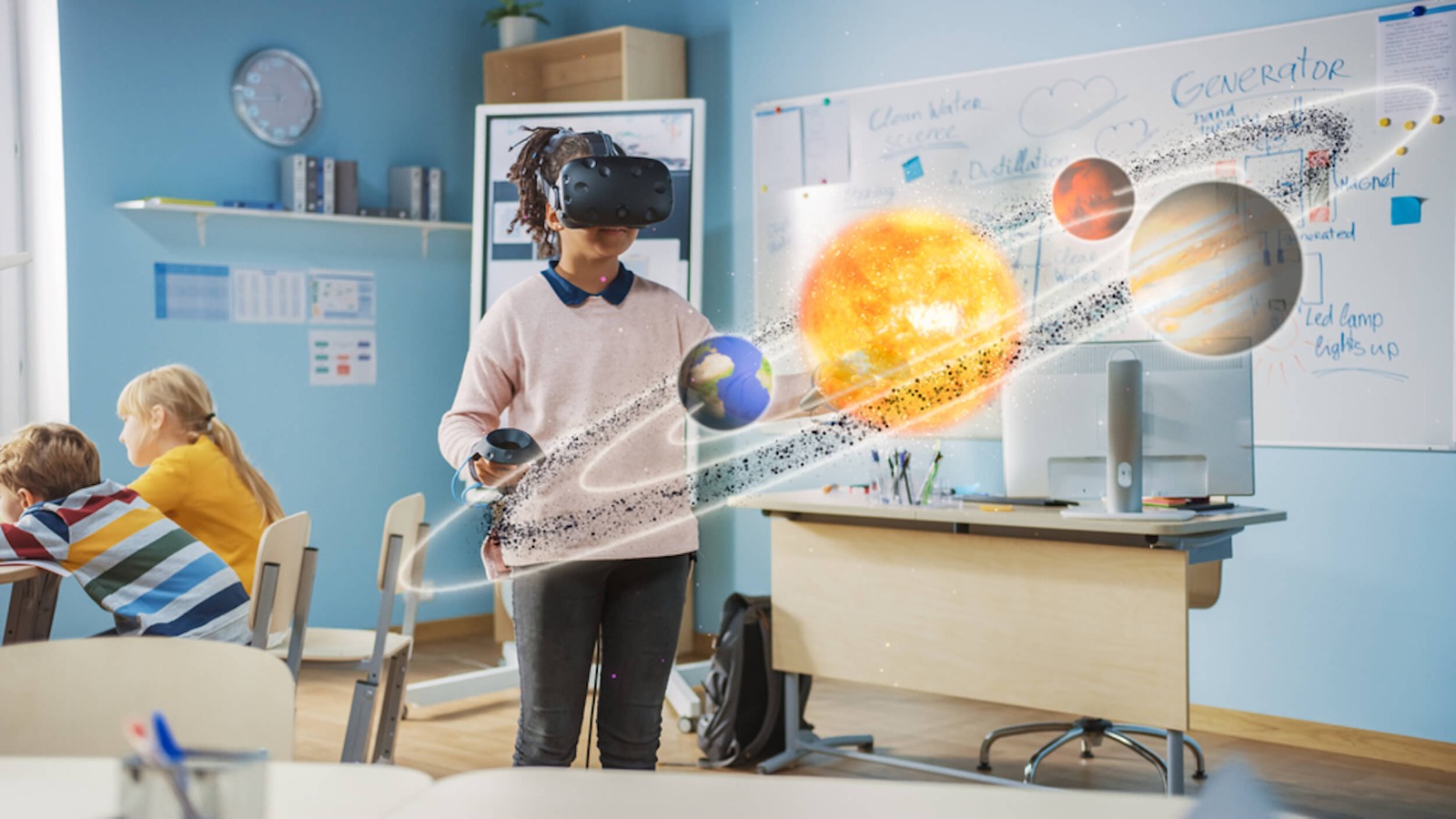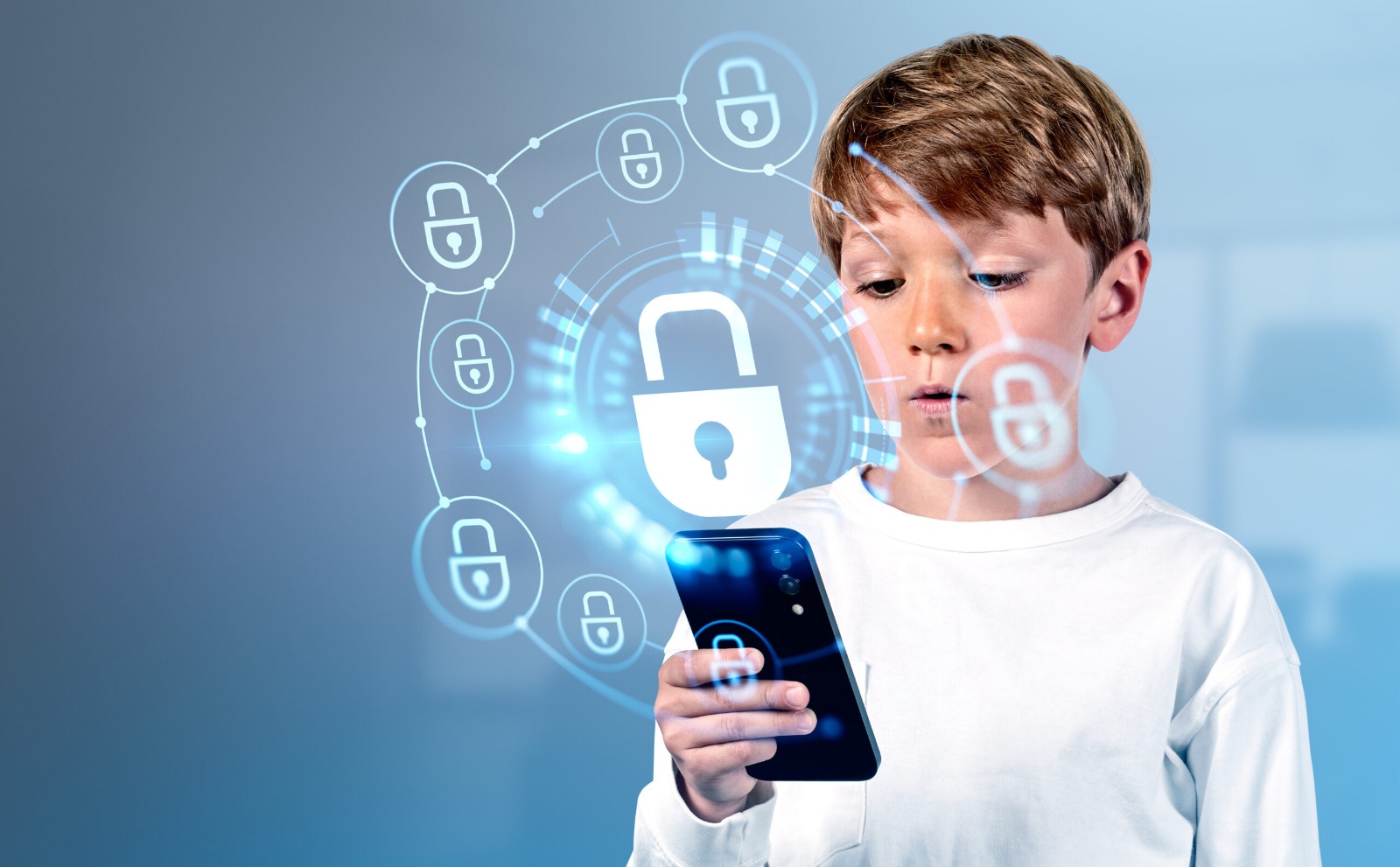
Virtual reality for social change: immersive storytelling for empathy, education.
Virtual Reality (VR) is transforming the way we understand and engage with the world, going beyond entertainment to foster empathy, awareness, and education. Through immersive storytelling, VR allows users to experience the lives of others firsthand, bridging cultural and social divides, enhancing learning, and inspiring action, making it a powerful tool for social change and compassionate global understanding.
✨ Raghav Jain

Introduction: A New Dimension of Human Connection
For decades, humanity has relied on stories to build empathy and understanding. From oral traditions to books and films, storytelling has shaped our moral imagination. But Virtual Reality (VR) represents a revolutionary leap—it doesn’t just show a story; it places you inside it. When used thoughtfully, VR becomes more than a technological marvel—it becomes an emotional bridge that allows users to experience perspectives they could never access otherwise.
In recent years, VR has emerged as a transformative tool for social change and education. From simulating the struggles of refugees to training medical students in empathy, immersive storytelling has proven its ability to awaken compassion and inspire meaningful action. This article delves deep into the rise of VR as a catalyst for empathy, education, and collective social transformation.
I. The Rise of Immersive Storytelling: From Observation to Experience
Traditional media—books, documentaries, or movies—allow audiences to witness events from a distance. VR eliminates that distance. It places the user within the environment, engaging their senses and emotions on a visceral level.
When a viewer puts on a VR headset, they are not just spectators—they become participants. They can stand in a refugee camp, walk through a flooded village, or attend a classroom in a war-torn region. The sensory immersion triggers an emotional connection that static media cannot match.
This sense of presence—the psychological illusion of “being there”—is what makes VR storytelling so powerful. It activates empathy by allowing people to directly experience circumstances unlike their own. Psychologists call this the “embodied cognition effect”—when users feel physically involved in a scenario, their understanding and emotions deepen dramatically.
II. Virtual Reality as a Tool for Empathy
Empathy is not just an emotion; it’s a foundation for social change. When people can see through another’s eyes, they are more likely to challenge prejudices, take humanitarian actions, and support equitable policies.
1. Experiencing Another Life
One of the most cited examples is “Clouds Over Sidra,” a VR film created by the United Nations in collaboration with filmmaker Chris Milk. The project immerses viewers in the daily life of a 12-year-old Syrian refugee girl named Sidra living in a camp in Jordan. Audiences don’t just watch her story—they live it. The impact was profound: donations to refugee causes doubled after screenings, and viewers reported a stronger emotional connection to displaced people.
2. Walking in Another’s Shoes
Stanford University’s Virtual Human Interaction Lab developed “Becoming Homeless,” a VR simulation that lets users experience the challenges of losing one’s job, home, and dignity. Participants showed measurable increases in compassion and willingness to support housing programs compared to those who only read about homelessness.
3. Breaking Prejudice and Bias
VR has also been used to reduce racial, gender, and age-based biases. For instance, “1000 Cut Journey,” a VR project from Columbia University, allows participants to experience life as an African-American male facing discrimination from childhood to adulthood. Studies show participants who undergo such simulations exhibit greater empathy and understanding of systemic racism.
In essence, VR empathy experiences help translate awareness into behavioral change—the ultimate goal of social transformation.
III. Virtual Reality in Education: The Classroom Without Walls
Beyond empathy, VR’s potential in education is immense. It turns passive learning into active discovery and abstract concepts into lived realities.
1. Immersive Learning Environments
Imagine studying marine biology by diving into the Great Barrier Reef or exploring human anatomy by traveling inside the bloodstream. VR allows students to experience lessons first-hand. Educational platforms like zSpace, Google Expeditions, and ClassVR are already transforming classrooms, making complex subjects more accessible and engaging.
2. Cultural Awareness and Global Citizenship
VR field trips enable students to explore the world without leaving their classroom—whether it’s walking through the streets of ancient Rome or visiting a school in Kenya. This promotes cultural understanding and global empathy among young learners.
3. Training Through Simulation
In professional education, VR is invaluable. Medical students use it to practice surgeries without risk to patients. Police and emergency responders train in life-threatening scenarios safely. Teachers use VR to understand classroom management challenges from a student’s perspective. These immersive experiences enhance skills, confidence, and emotional intelligence.
4. Empathy-Based Education
Some schools and universities now integrate VR empathy training into curricula. For instance, nursing programs use VR to let students experience what it’s like to live with dementia or mobility impairment. By “living” those challenges, future caregivers develop more compassionate and patient-centered approaches.
VR thus shifts education from memorization to humanization—a transformation that could redefine learning itself.
IV. Real-World Applications: Virtual Reality Driving Social Change
1. Human Rights and Advocacy
Organizations like Amnesty International and Doctors Without Borders use VR to immerse policymakers and donors in the conditions faced by vulnerable populations. Experiencing injustice first-hand, even virtually, motivates deeper engagement and funding.
2. Environmental Awareness
VR documentaries like “Tree” allow users to experience life as a rainforest tree—from sprouting to being cut down. Projects like these evoke a profound sense of connection to the environment and urgency about conservation. Similarly, the UN’s VR Climate Change Experience places viewers in areas devastated by rising sea levels, helping translate abstract climate data into emotional realities.
3. Social Inclusion and Accessibility
For individuals with disabilities, VR offers a space for inclusion. It can simulate challenges for others to understand accessibility issues or allow disabled users to experience activities otherwise impossible in real life, promoting dignity and equality.
4. Conflict Resolution and Peacebuilding
VR has been used in post-conflict areas to promote reconciliation. The “Project Dastaan” initiative, for example, reconnects families displaced during the India-Pakistan partition through VR journeys to their ancestral villages—healing old wounds and bridging divides through shared experience.
V. The Psychology Behind Virtual Empathy
The human brain responds to VR experiences as though they are real. Neuroimaging studies show that when users experience empathy-driven VR simulations, brain regions linked to emotional and moral reasoning (like the anterior insula and prefrontal cortex) are more active than during traditional storytelling.
This heightened emotional engagement explains why VR can shift perspectives so effectively. However, psychologists also caution that overexposure or poorly designed experiences can lead to “empathy fatigue” or desensitization. Therefore, ethical design and guided reflection are essential to balance impact with well-being.
VI. Challenges and Ethical Considerations
While the potential of VR for social good is enormous, it comes with ethical and technical challenges.
- Authenticity and Bias:
- VR experiences must represent real stories accurately. Misrepresentation or sensationalism could exploit suffering rather than evoke empathy.
- Privacy and Consent:
- When depicting real people’s experiences (e.g., refugees or victims), consent and data privacy are crucial to avoid re-traumatization.
- Emotional Overload:
- Highly realistic trauma simulations can be overwhelming. Designers must ensure debriefing mechanisms or safe exit points for participants.
- Accessibility and Cost:
- Despite growing affordability, VR headsets remain inaccessible to many educational institutions or NGOs in developing countries. Ensuring equitable access is key to its global impact.
- Sustainability of Impact:
- Empathy gained through VR can fade over time unless reinforced by education or real-world action. Therefore, integration with follow-up programs, volunteering, or curriculum-based learning is vital.
VII. The Future of VR for Empathy and Education
As VR technology evolves, its applications will become even more sophisticated. Haptic feedback, AI-driven storytelling, and multi-user virtual spaces will make experiences more interactive and emotionally resonant.
Imagine students from different continents meeting in a virtual classroom to jointly experience a simulation on climate change or poverty. Or activists creating global empathy campaigns where people share perspectives in real-time through VR.
The blending of VR with Augmented Reality (AR) and Artificial Intelligence (AI) will allow for adaptive storytelling—where the narrative changes dynamically based on user emotion or decisions, making empathy education more personalized and enduring.
Ultimately, the future of VR lies not in its technical complexity but in its human purpose—its ability to bring people closer, dissolve barriers, and inspire collective action for a more compassionate world.
Virtual Reality (VR) is rapidly emerging as a revolutionary tool that extends far beyond its initial applications in gaming and entertainment, offering unprecedented opportunities for social change, empathy cultivation, and educational transformation, as it allows individuals to experience the world from perspectives radically different from their own, thereby bridging emotional, cultural, and social divides that conventional media often struggle to cross, and this capability is rooted in VR’s unique ability to create a profound sense of presence, the psychological phenomenon in which users feel physically and emotionally immersed within a digital environment, making them not mere observers but active participants in experiences that simulate real-world conditions, whether it is walking through the streets of a refugee camp in Jordan alongside a young girl like Sidra in the United Nations’ acclaimed VR project “Clouds Over Sidra,” which allowed viewers to witness the daily hardships, hopes, and resilience of displaced children, or navigating the challenges faced by individuals experiencing homelessness, as demonstrated in Stanford University’s Virtual Human Interaction Lab project “Becoming Homeless,” where participants experience, from first-person perspective, the emotional and logistical difficulties of losing housing and social support, leading to measurable increases in empathy and willingness to engage in social support initiatives; VR also plays a transformative role in reducing prejudice and bias by allowing users to embody identities different from their own, as seen in programs where participants experience racial, gender, or age-based discrimination, which research shows can significantly reduce implicit bias by generating an embodied understanding of systemic inequities, and the technology’s potential for education is equally compelling, as it shifts learning from passive absorption to active, experiential engagement, allowing students to explore complex subjects through direct interaction, such as virtually dissecting the human body to understand anatomy, diving into marine ecosystems to study coral reefs, or stepping into historical environments to gain a deeper understanding of cultural heritage, while also fostering global citizenship by exposing learners to diverse cultural perspectives and environmental challenges, cultivating empathy and awareness of issues like poverty, climate change, and social injustice, and VR’s impact extends beyond conventional classrooms into professional training, where medical, law enforcement, and social work students can practice skills in risk-free but highly realistic simulations, developing not only technical expertise but also emotional intelligence, compassion, and problem-solving abilities; the power of immersive storytelling in VR is enhanced by its capacity to engage multiple senses simultaneously, creating memory-rich experiences that are more likely to influence attitudes and behaviors than traditional storytelling or two-dimensional media, and by integrating haptic feedback, spatial audio, and interactive elements, these experiences can evoke genuine emotional responses that motivate social action, whether through increased charitable donations, advocacy for human rights, or personal lifestyle changes to support sustainability and inclusion, and examples abound, from environmental VR experiences like “Tree,” which allows users to experience life from the perspective of a rainforest tree and witness deforestation’s devastating effects firsthand, to initiatives that simulate life in disaster-affected regions, fostering both empathy and practical understanding of humanitarian challenges; yet, the transformative potential of VR is accompanied by ethical considerations that must be carefully navigated, including the necessity of obtaining informed consent from those whose stories are represented, avoiding sensationalism or exploitation of trauma, ensuring that experiences are designed to prevent emotional overload or empathy fatigue, and addressing issues of accessibility, as VR headsets and supporting infrastructure remain out of reach for many communities that could benefit most from these interventions; further, the sustainability of VR-driven social impact depends on integrating immersive experiences with broader educational or advocacy programs, encouraging reflection, discussion, and real-world action to reinforce insights gained within virtual environments, and ongoing research in psychology and neuroscience supports VR’s unique efficacy, demonstrating that brain regions associated with moral reasoning, emotional empathy, and perspective-taking are significantly more activated during immersive VR experiences than during traditional media consumption, which helps explain why VR can effectively alter perceptions, reduce biases, and motivate altruistic behavior, but it also underscores the responsibility of creators to ensure these tools are applied with care, cultural sensitivity, and a commitment to constructive outcomes; looking ahead, the future of VR in social change and education promises even greater sophistication, as emerging technologies such as AI-driven adaptive narratives, multi-user shared virtual environments, and integration with augmented reality (AR) will allow experiences to dynamically respond to user behavior and emotions, creating personalized, interactive storytelling that deepens understanding, fosters collaboration across borders, and enables participants to co-create solutions to real-world problems, potentially transforming empathy and education from isolated concepts into actionable, collective forces capable of addressing global challenges, and by embedding VR into curriculum design, professional training, and advocacy campaigns, society can harness its immersive power not just for awareness but for tangible change, making it a critical tool for cultivating compassion, global awareness, and active engagement, ensuring that individuals do not merely learn about social issues but experience them in ways that leave lasting cognitive, emotional, and behavioral imprints, ultimately bridging the gap between knowledge and action, virtual experience and real-world impact, and imagination and empathy, establishing VR as one of the most potent instruments in the modern effort to foster a more understanding, just, and inclusive world.
Virtual Reality (VR) has emerged as one of the most transformative technologies of the 21st century, extending far beyond its initial applications in gaming and entertainment to become a powerful tool for social change, empathy cultivation, and education, because it enables individuals to step directly into the lived experiences of others, providing a level of emotional and cognitive immersion that traditional media, such as books, films, or documentaries, cannot achieve, and this immersive quality is rooted in the concept of “presence,” a psychological phenomenon in which the user feels physically and emotionally situated within a virtual environment, thereby creating opportunities for profound empathy, perspective-taking, and behavioral change, as demonstrated in projects like the United Nations’ “Clouds Over Sidra,” which allows participants to experience the daily life of a 12-year-old Syrian refugee in a Jordanian camp, offering an intimate understanding of the struggles, hopes, and resilience of displaced populations, and such experiences have been shown to significantly increase donations, awareness, and engagement, highlighting VR’s ability to convert emotional connection into actionable social support, while academic research, including studies from Stanford University’s Virtual Human Interaction Lab, has demonstrated that VR simulations such as “Becoming Homeless” can generate measurable increases in compassion, empathy, and willingness to support social initiatives by allowing participants to experience the challenges of losing one’s home and social standing firsthand, which engages brain regions associated with emotional and moral reasoning more intensely than traditional storytelling and enhances long-term retention of empathetic attitudes, and VR’s applications in reducing bias and prejudice are equally notable, as simulations that allow users to inhabit identities different from their own—whether through race, gender, age, or socioeconomic status—have been shown to decrease implicit biases and foster understanding of systemic inequalities, reinforcing the idea that empathy is most effectively cultivated through lived, sensory-rich experiences rather than abstract concepts alone, while in the educational domain, VR transforms passive learning into interactive, experiential engagement, allowing students to explore complex scientific, historical, and social concepts in ways that are both immersive and memorable, such as exploring coral reefs to study marine biodiversity, traveling inside the human body to understand anatomy, walking through ancient cities to learn history, or visiting schools in different countries to gain cross-cultural awareness, and this experiential learning enhances cognitive retention, critical thinking, and emotional intelligence, while also fostering global citizenship by exposing learners to social, environmental, and cultural challenges they may never encounter firsthand, thereby instilling a deeper sense of responsibility, empathy, and interconnectedness, and beyond traditional classrooms, VR is revolutionizing professional training, as medical students can practice surgeries in risk-free simulations, social workers can experience clients’ perspectives, police and emergency responders can navigate high-stakes scenarios safely, and teachers can better understand classroom dynamics from a student’s viewpoint, all of which enhance not only technical skills but also interpersonal sensitivity, moral reasoning, and decision-making abilities, and VR’s potential for social advocacy and environmental awareness is equally remarkable, as immersive experiences such as “Tree” allow users to experience life as a rainforest tree, witnessing growth, ecological interaction, and eventual deforestation, thereby transforming abstract environmental issues into deeply felt personal experiences that motivate behavioral change, conservation efforts, and advocacy, while initiatives like VR climate change simulations place users in affected communities, creating a direct emotional connection to environmental crises and prompting engagement in sustainability and activism, yet while the potential of VR is vast, it must be approached with ethical considerations in mind, including the importance of accurate and authentic storytelling, obtaining informed consent from those whose experiences are represented, avoiding exploitation of trauma or sensationalism, providing safe exit points to prevent emotional overload, and addressing accessibility challenges, as VR technology remains relatively expensive and infrastructure-intensive, which can limit its reach, particularly in under-resourced educational or humanitarian settings, and the sustainability of VR-driven empathy and social change depends on thoughtful integration with follow-up programs, reflection exercises, discussion forums, and opportunities for real-world action, ensuring that the emotional and cognitive engagement fostered in virtual experiences translates into lasting behavioral and societal impact, and looking to the future, VR is poised to become even more influential through the integration of AI-driven adaptive storytelling, haptic feedback, spatial audio, multi-user shared virtual environments, and augmented reality, enabling experiences that respond dynamically to user interactions, emotions, and decisions, thereby personalizing learning, empathy-building, and social awareness on a scale never before possible, and this convergence of technologies can facilitate collaborative global experiences where participants from different cultural, geographic, or socio-economic backgrounds share perspectives, solve problems, and co-create solutions in immersive virtual spaces, ultimately transforming empathy and education from passive concepts into active, participatory forces for social good, and the continued research into VR’s psychological and neurological effects further underscores its potential, as neuroimaging studies reveal heightened activity in brain regions related to empathy, moral reasoning, and perspective-taking during VR experiences, indicating that these simulations are not just emotionally engaging but neurologically impactful, promoting cognitive and behavioral changes that persist beyond the virtual environment, making VR an indispensable tool for educators, advocates, humanitarian organizations, and policymakers seeking to cultivate understanding, compassion, and informed action, and in a world increasingly marked by social polarization, environmental crises, and global interconnectedness, VR offers a medium capable of bridging gaps, fostering dialogue, and inspiring collective responsibility, ultimately establishing immersive virtual experiences as a cornerstone of modern strategies for empathy cultivation, educational innovation, and social change, and by combining technological sophistication with ethical storytelling, equitable access, and structured follow-up, VR can ensure that individuals not only understand the realities of others’ lives intellectually but experience them emotionally, thereby motivating action, shaping attitudes, and building a more empathetic, informed, and socially responsible global community, transforming the promise of virtual reality into tangible, real-world impact across social, educational, and environmental domains.
Conclusion
Virtual Reality is redefining how we feel, learn, and act. By transforming storytelling into lived experience, VR builds bridges of empathy and understanding that transcend cultural and social divides. It has already proven effective in raising awareness for refugees, training professionals in compassion, and educating students through immersive engagement.
However, the power of VR must be wielded responsibly. Ethical storytelling, accessibility, and emotional care must guide its use. When done right, VR becomes a tool not just for information, but for transformation—a means to create a generation that not only knows about others’ struggles but truly feels them.
In a world increasingly divided by screens and misinformation, VR offers something revolutionary: not more distance, but more connection.
Q&A Section
Q1 :- What makes VR an effective tool for empathy and social change?
Ans:- VR immerses users directly in another person’s experience, creating a powerful emotional connection. This sense of presence and embodiment activates empathy, leading to deeper understanding and more compassionate behavior.
Q2 :- How is VR used in education?
Ans:- VR enhances learning by turning abstract lessons into interactive experiences—students can explore historical events, scientific phenomena, or global cultures firsthand, improving comprehension and retention.
Q3 :- Can VR replace traditional teaching methods?
Ans:- Not entirely. VR should complement, not replace, traditional methods. It’s best used as a tool for experiential learning, alongside reading, discussion, and real-world application.
Q4 :- What are some examples of VR being used for social good?
Ans:- Projects like “Clouds Over Sidra,” “Becoming Homeless,” and “Tree” use VR to promote empathy toward refugees, the homeless, and environmental causes. NGOs and educational institutions use such experiences to raise awareness and funds.
Q5 :- What ethical concerns arise with VR empathy experiences?
Ans:- Designers must avoid exploiting trauma or distorting reality. Privacy, consent, and emotional safety are essential. Overexposure can lead to empathy fatigue, so moderation and reflection are key.
Similar Articles
Find more relatable content in similar Articles

Data Centers and the Planet: M..
As cloud computing becomes the.. Read More

Digital DNA: The Ethics of Gen..
Digital DNA—the digitization a.. Read More

Wearable Health Sensors: The D..
Wearable health sensors are re.. Read More

Protecting Kids in the Digital..
In an increasingly connected w.. Read More
Explore Other Categories
Explore many different categories of articles ranging from Gadgets to Security
Smart Devices, Gear & Innovations
Discover in-depth reviews, hands-on experiences, and expert insights on the newest gadgets—from smartphones to smartwatches, headphones, wearables, and everything in between. Stay ahead with the latest in tech gear
Apps That Power Your World
Explore essential mobile and desktop applications across all platforms. From productivity boosters to creative tools, we cover updates, recommendations, and how-tos to make your digital life easier and more efficient.
Tomorrow's Technology, Today's Insights
Dive into the world of emerging technologies, AI breakthroughs, space tech, robotics, and innovations shaping the future. Stay informed on what's next in the evolution of science and technology.
Protecting You in a Digital Age
Learn how to secure your data, protect your privacy, and understand the latest in online threats. We break down complex cybersecurity topics into practical advice for everyday users and professionals alike.
© 2025 Copyrights by rTechnology. All Rights Reserved.